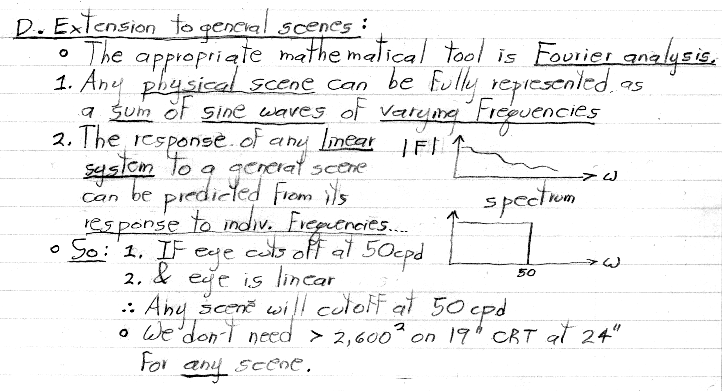


CS 248 - Introduction to Computer Graphics
Autumn Quarter, 2008
Marc Levoy
Lecture notes for Thursday September 25
Note: There is more detail in these notes than I covered in my lecture today, mainly on the topic of CRTs. As I mentioned in class, it is no longer worth spending much time on that increasingly obsolete topic. You are not responsible (e.g. on the exams) for material I don't cover in class. For most classes, the written notes will follow the lectures more closely.
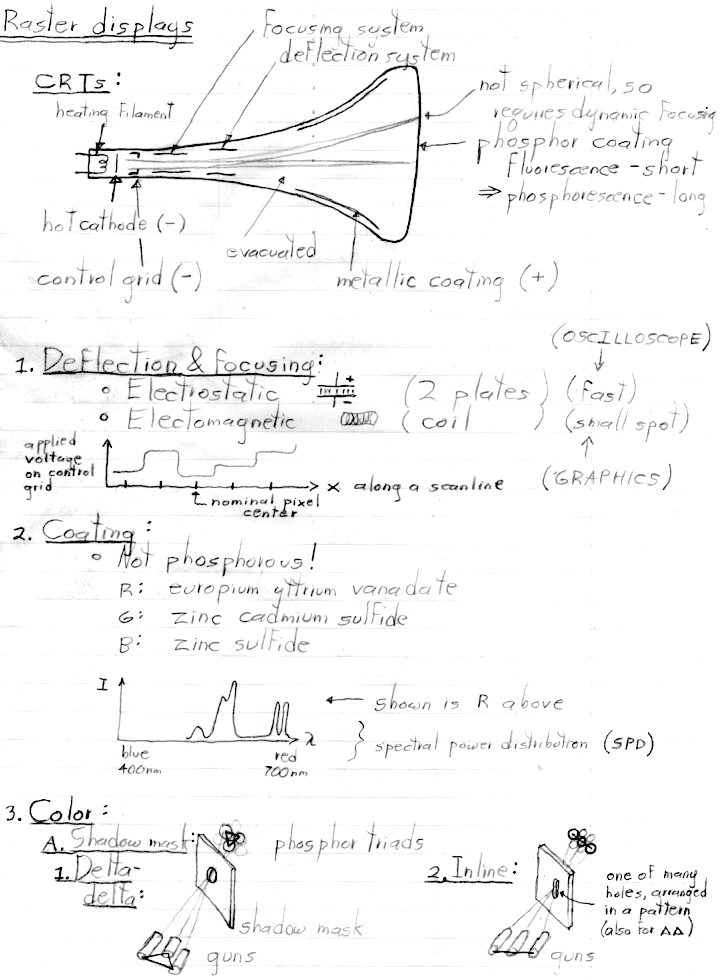
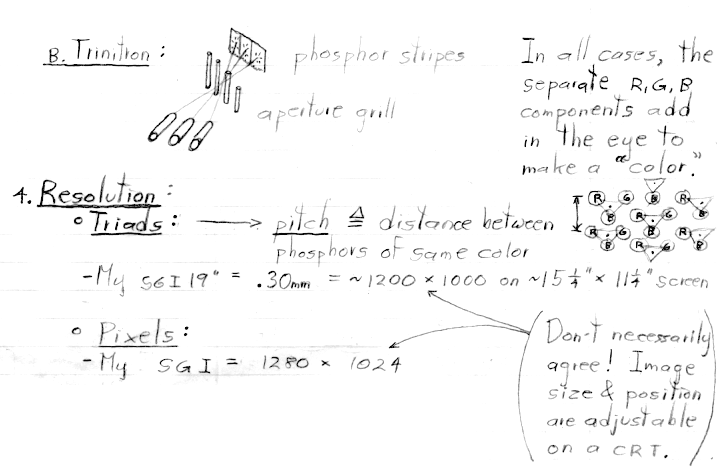
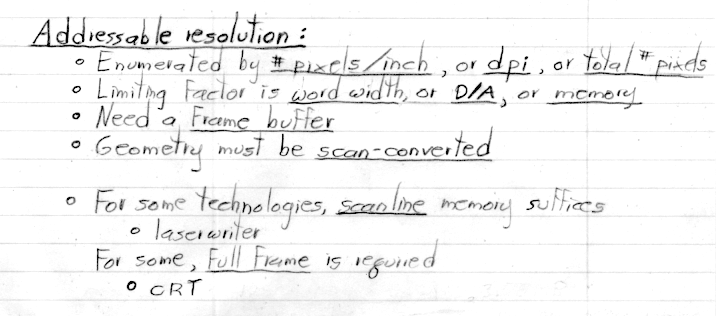
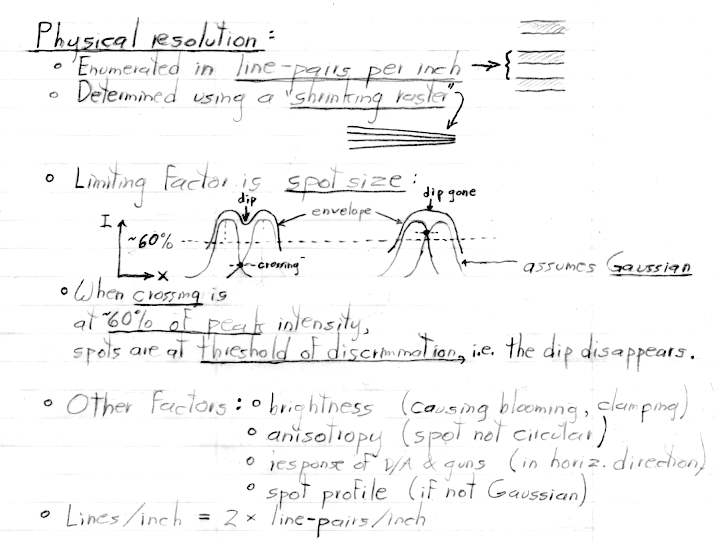
As I mentioned in class, subpixel font rendering technology only works if the alignment of pixels to color stripes can be guaranteed. In other words, it works on an LCD, but not on a CRT. My example assumes that the text is black on a white background, but the technology also works for a colored text and/or background. Of course, if the text is pure red on black, then we have only the red stripes to play with, and subpixel fonts gain you nothing. By the way, it's hard to properly explain this technology before we've covered rasterization and antialiasing. It would be worth your while to come back and take a second look at this slide in a few weeks.
So assuming you're using an LCD, which computer system vendors use subpixel font rendering? Microsoft does, at least in Vista. Mac does too, at least in Leopard (OS 10.5). However, if you tell the Mac (in the Displays control panel) that you've rotated your monitor by 90 degrees, so that the subpixel stripes run horizontally instead of vertically, Apple wisely knows that this would break the rendering algorithm - producing horrible visual artifacts. Their solution is to revert to simple grayscale antialiasing. Fortunately, as the spatial resolution of displays grows (my 30" monitor has over 100 dpi), subpixel font rendering matters less and less. On such monitors, grayscale antialiasing looks nearly indistinguishable from subpixel font rendering.
For more information on this fascinating technology, look at http://grc.com/cleartype.htm. For a discussion of font rendering on the Mac, see this blog.
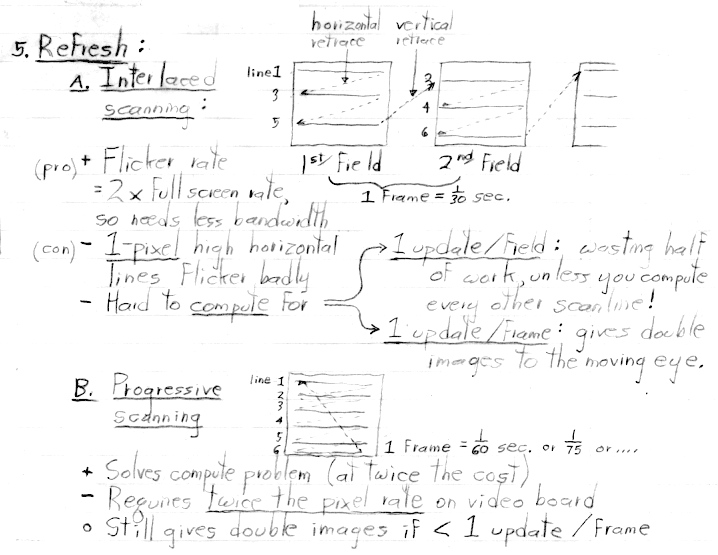
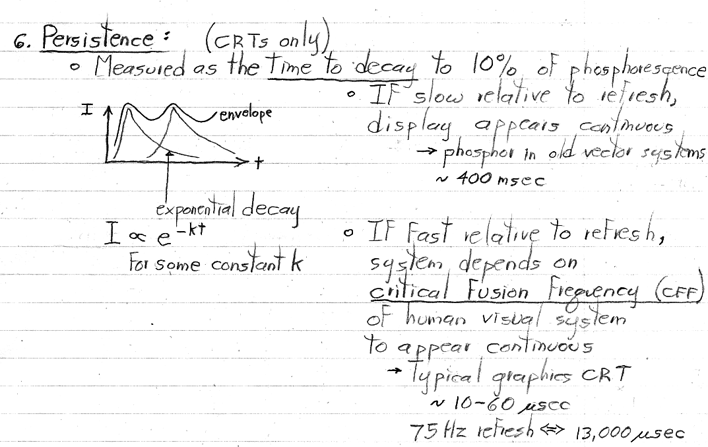




Section D requires an understanding of Fourier analysis, which we won't cover
until Oct. 2, but in case you're interested...



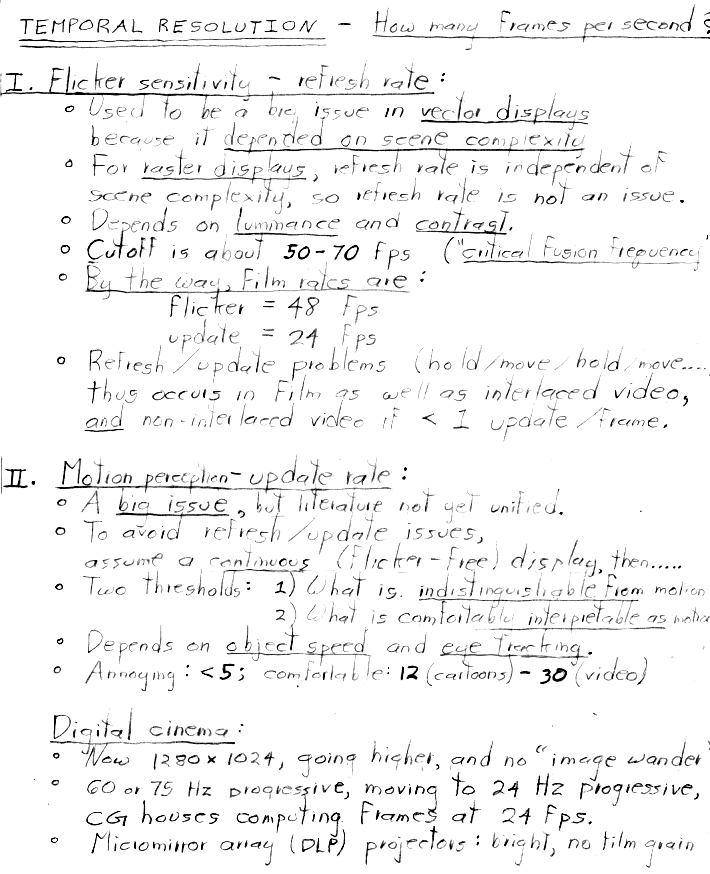
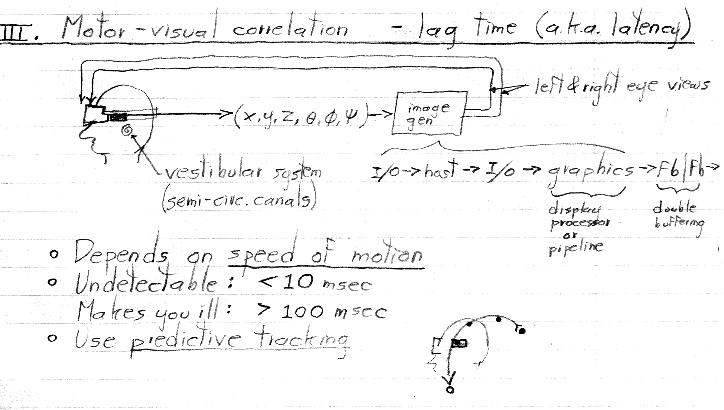
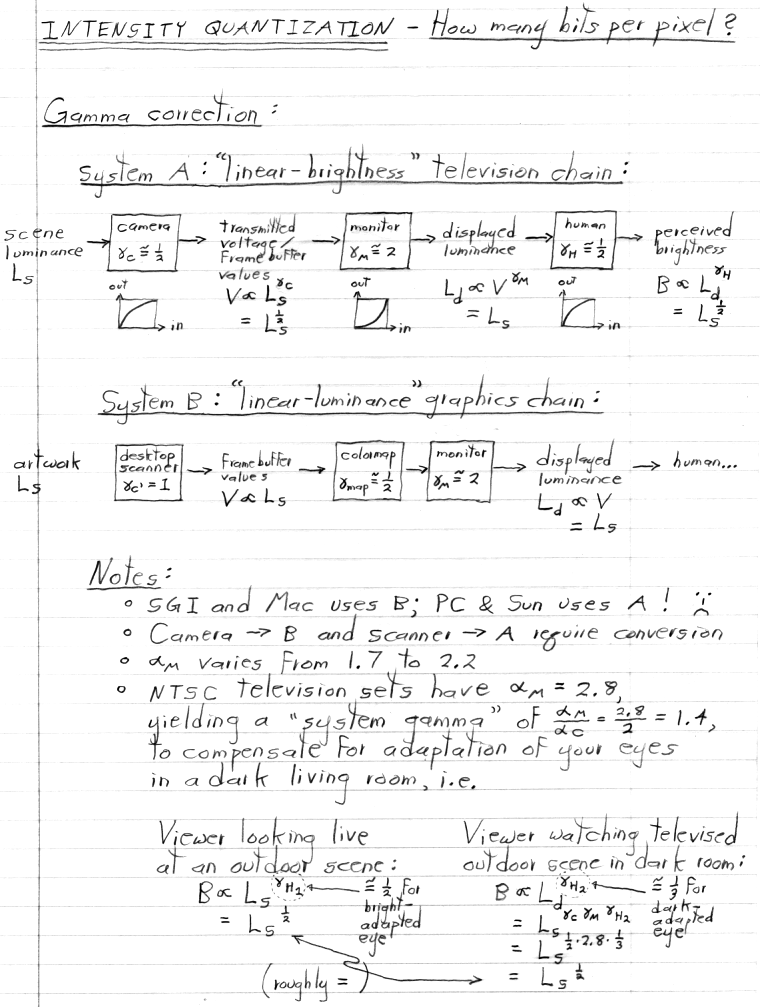

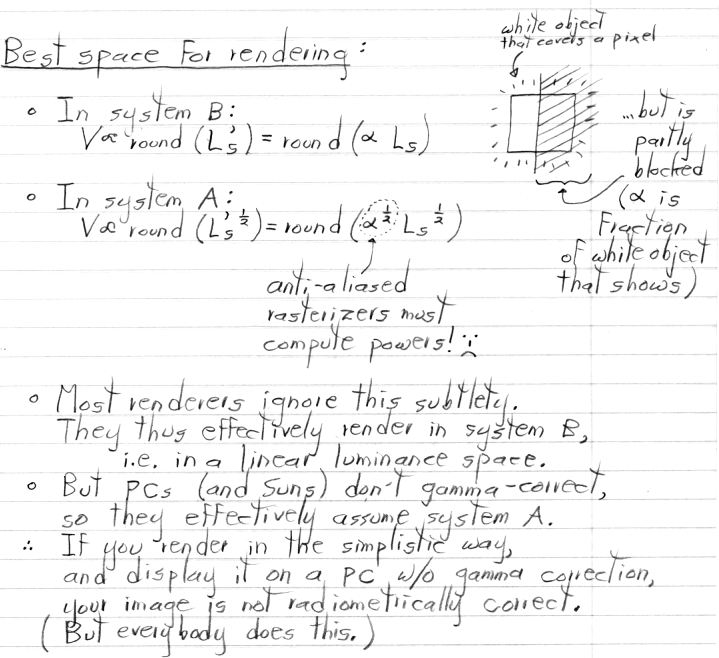
So how many bits do we need per pixel?
Click here to see a
demo that addresses this question.
Make sure you view this demo on a gamma-corrected monitor,
as the instructions say.
By the way, if you want more gory details on gamma correction as practiced by different computer vendors, with particular attention paid to the Mac, see this great article by Charles Poynton on Gamma correction on the Apple Macintosh.